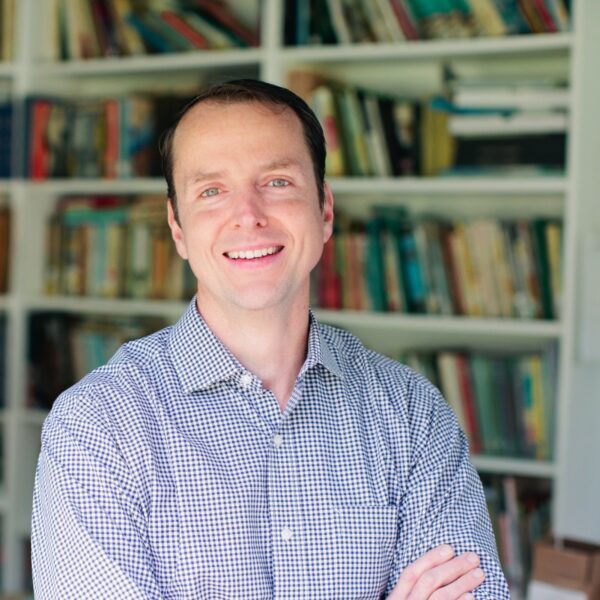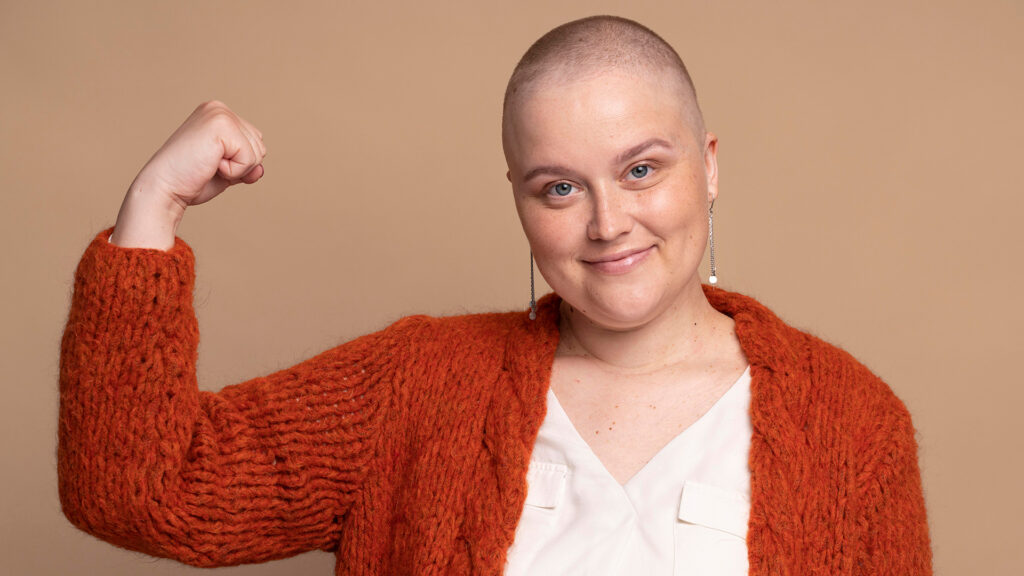Note This Article has been updated.
We all are affected by cancer – directly or indirectly. But why is it so prevalent these days? What can we do about it?
As a functional medicine practitioner, I seek the root cause of disease; cancer is no exception. So today I’d like to address some of the common myths that I hear and discuss some more recent findings about cancer.
1. Cancer is genetic.
I know this may fly in the face of how you think about cancer, but most cancers are actually not genetic. Take, for example, the BRCA1 and BRCA2 genes that are currently associated with an 80% risk of breast cancer. However, in the 1950s, these genes were only associated with a 20% risk of breast cancer. You read that correctly. There has been a 400% increase in the risk of breast cancer in those who have the genetic predisposition. That’s also the reason why the standard of care has changed over the last 70 years. The standard of care now for the BRCA gene is a bilateral mastectomy, having the fallopian tubes removed, and (in some cases) the ovaries as well. This is a very extreme way to treat breast cancer risk, especially now that we know that environment and lifestyle can increase your risk of cancer by 400%. Is it possible to reverse our risk from that 80% back down to 20%? Well, it depends on the person, but it would seem likely based on our history.
2. Cancer is not preventable.
The truth is that cancer is quite preventable. In 1900, the lifetime incidence of cancer was 1 in 100. Now 50% of Americans are expected to get cancer at some point in their lifetime. Yes, this statistic that half of Americans will be diagnosed with cancer of some sort is mind-boggling. To put this in perspective, in the 1990s, the risk for getting cancer was about 10%. So these rates have increased from 1 in 100, to 10 in 100, to 50 in 100 in just the last 120 years.

3. There is only one kind of breast cancer.
We now know that there are over 80 different types of breast cancer based on different gene mutations. So how do you treat something that has 80 different types and has multiple different gene mutations? From this information we can clearly see that cancer by itself is not a diagnosis. We have to ask the question: Why?
4. Diet has nothing to do with my risk of cancer.
Fascinating data from the Harvard School of Public Health is very clear that between 70 to 80% of cancer can be prevented by diet and lifestyle. That means that if we just change our diet and our lifestyle – exercise, sleep, stress management, environmental chemicals, and toxins – we could eradicate between 70 – 80% of cancer. It also explains partially, not completely, why we’re seeing a great increase in the risk of cancers over the last 100 years.
5. We don’t really know what causes cancer.
Actually, we do know. Cancer is a metabolic disease. We’ve learned that infections, environmental toxins, and other triggers actually cause a disruption in our body’s ability to make energy at the level of the mitochondria. This phenomenon is called mitochondrial uncoupling. When this happens, it makes our genes unstable. This can result in gene mutations that lead to cells becoming immortalized so that our bodies can’t get rid of them. These are the cells that become cancer. This idea that gene mutations are actually caused by inappropriate mitochondrial function is a paradigm shift. The great news is that there are things we can do about it!
6. Cancer is caused by our environment.
As we saw in number 5, cancer is actually a metabolic disease. It’s related to our body’s ability to make energy. When that gets disrupted, we switch from an oxygen-rich to an oxygen-poor method of making energy. This is the reason why lifestyle factors like exercise and proper nutrition can prevent cancer – because they actually improve the oxygen flow to our tissues. The important thing to remember is that cancer is primarily a metabolic disorder, not a genetic disorder, and not an environmental disorder. This also means that we have more tools in our toolkits to deal with our metabolism in order to help prevent cancer.

7. I’ve been diagnosed with cancer, so I’m going to die from cancer.
Again, this is simply not true. An eye-opening example is that, in women diagnosed with breast cancer, the most common cause of death is still cardiovascular disease. We’ve become good enough at treating breast cancer that those diagnosed are still dying from heart disease. This also means that, if you’re a cancer survivor, you can focus on things that will decrease your risk for inflammation, cardiovascular disease, and recurrence of cancer. These fall squarely into the realm of functional medicine, environmental medicine, and precision medicine. We seek to find out what people’s risk factors are and lower them.
8. There’s nothing I can do to prevent a second cancer.
This data is quite interesting. Doing a ketogenic-type diet, by itself, can lower your risk for breast cancer recurrence by 25%. That’s an amazing number considering that one out of eight women will get breast cancer in their lifetime. I understand that a ketogenic-type diet is sometimes difficult and hard to stick to, but I believe we should at least give people the option of having that as a therapeutic choice, after they’ve been treated, to help prevent a secondary cancer.
9. Once I’ve been diagnosed with cancer, there’s no reason to work with a nutritionist or functional practitioner.
There are many things we can do to make treatments more effective, reduce side effects from treatments, and help people tolerate the therapies better. Everyone who gets radiation or chemotherapy develops a leaky gut and has nutritional deficiencies from the treatment. This is where functional medicine shines. We can actually come alongside patients and help them better tolerate treatments and then also help them prevent a secondary recurrence. Something as simple as a vitamin D level is important when thinking about cancer treatment, as it can have a massive impact on your risk for primary or secondary cancer recurrence. Low vitamin D increases the risk for nearly all cancers. That is just one simple example of the many functional medicine interventions that can help.
10. Infections have nothing to do with cancer.
There is actually a large body of literature on infections and cancer. The majority of head and neck cancers in people who don’t smoke come from the HPV virus, the same virus that causes cervical cancer in women. We also have information about chronic Epstein-Barr virus infections linked to certain cancers like cancer of the nose and mouth (nasal pharyngeal carcinoma) and certain types of leukemia and lymphomas. As we understand how the cells work, we’ve learned that mitochondrial uncoupling (discussed in #5) can also be caused by chronic infections. So one line of investigation, when you’re trying to prevent cancer, is to look for chronic infections and address them. There are many other strategies that can help boost your immune system including addressing vitamin D, B vitamins, and minerals such as magnesium. Just having low B vitamins, magnesium, and vitamin D can increase your risk for cancer.
BONUS Myth: The cure for cancer is right around the corner.
After reading the 10 myths above, you can see how this is not true. If there are 80 different kinds of breast cancer, multiple kinds of melanoma, and various other cancers, we can see that cancer is not, by itself, a diagnosis.
We must ask: What’s causing cancer? Yes, there are genes that can make a person much more likely to get certain cancers, but even they have environmental components. We also know that part of the job of the immune system is to remove cancer cells. The average person makes about a million cancer cells a day. Yes, you read that correctly – about a million cancer cells every day. But our bodies usually do a good job of clearing them; either our immune system detects and removes them or they destroy themselves.
Summary
Ultimately, cancer is a metabolic dysregulation. To prevent this loss of regulation, we have to go back to the root cause. In our clinic, we work with patients to prevent cancer, as well as with those who have been diagnosed to better understand the root cause and help prevent a recurrence.
Again, in 1900, 1 out of 100 people got cancer. Let’s work toward getting back to those kinds of numbers.
If you’d like to learn more as you progress on your health journey, I’d suggest starting with the recommended reading list on our website. Our goal is to provide you with the best information we can to help you on your path forward to wellness and live the best life you can live.
Since 2010, Richmond Integrative and Functional Medicine has been helping people to restore their health and hope with an integrative approach to conventional and alternative medicine that’s entirely science-backed. We at RIFM believe everyone is made for health. We offer a comprehensive, in-person patient membership program to ensure you get access to the care you need to thrive.

Don’t Miss Out
Sign up for our newsletter and be the first to know when Dr. Hartman posts a new article.

